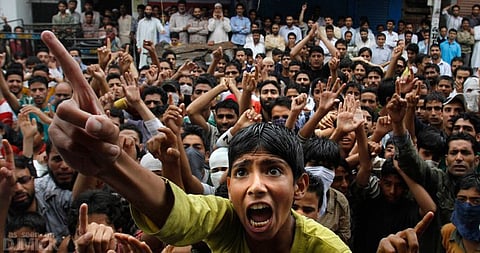In the mounting heap of blood-soaked images, I have a recurrent dream about Kashmir: a night filled with desolation and toxic smoke. I hear women wailing in the distance. The ground is abysmal and shaky. The street is a litter of limbs and stones and broken glass.
These lines by Feroz Rather in Berfrois, August 2016, were part of an essay entitled 'Kashmir and the Masque of India', written in response to the brutal crackdown in Kashmir precipitated by protests over the killing of 22-year-old Burhan Wani. Through the ingenious deployment of social media the young militant and his accomplices had created a strong visual counter-culture that fired the imagination and pro-freedom sentiment of the Kashmiri people on a scale not quite seen since the 1990s.
For Rather's generation which grew up in the nineties, occupation has been a part of their lives as has the savage reign of tortures, custodial killings, enforced disappearances, sexual violence by security forces and mass killings. These crimes have been exhaustively documented in dossiers on human rights by activists and in reportage including Basharat Peer's landmark book Curfewed Nights. Rather, however, says he chose fiction because it affords spaces of contemplation and a deeper understanding of violence. But how does one fictionalise "limbs and stones and broken glass"? It requires creativity of a different kind for a writer to go beyond reportage and portray the abysmal and shaky ground of warscapes. Using facts to inform fiction in his debut book The Night of Broken Glass, Rather picks up shards of memory and strings them into forms of terrible beauty.

